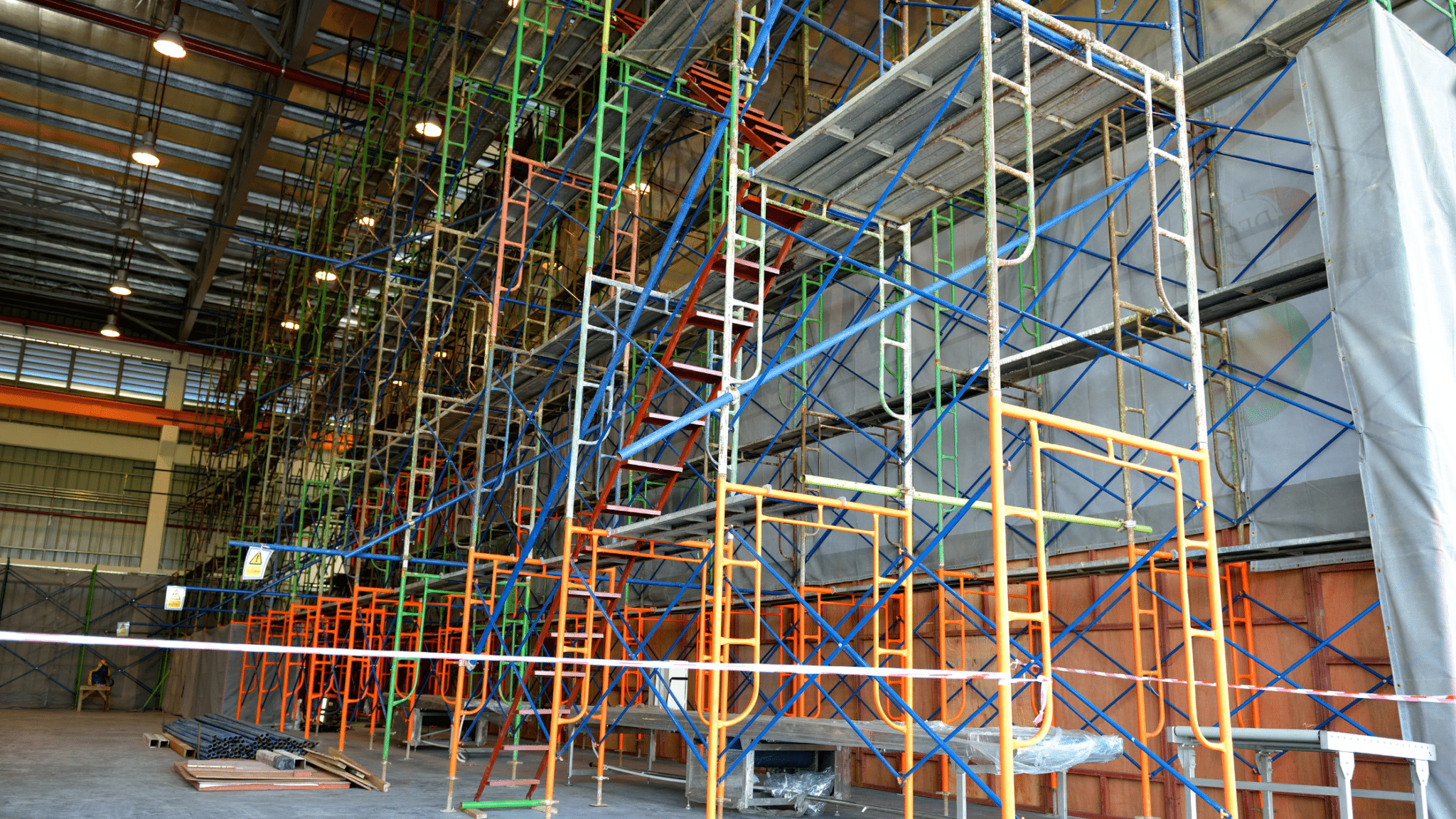Understanding a scaffolder's job responsibilities ensures you avoid scams and get your money's worth. Also,…

What are Scaffold Weight Limits?
We cannot stress enough the importance of understanding scaffold weight limits when undergoing any kind of construction. In this blog, we’ll outline the specific weight limits before highlighting the various factors that directly affect these weight limits. We’re confident that after this blog, you’ll know which type of scaffolding is right for you.
So, what are the maximum scaffold weight limits? Scaffolding weight limits are split into three main categories; light duty scaffolding supports loads up to 25Ib PSF, medium duty scaffolding supports loads up to 50Ib PSF and heavy duty scaffolding which supports loads up to 75Ib PSF.
Read on to find out what other factors affect scaffolding weight limits and why you should not exceed these weight limits.
What are the Maximum Scaffold Weight Limits?
Whilst working on a jobsite where scaffolding is present, it is crucial to know how to identify the safe load rating for a scaffold platform. Scaffolding is an extremely useful form of equipment for accessing difficult areas but if used incorrectly it can be very dangerous. Whenever you are calculating weight loads for scaffolding, it is vital to seek the expertise of qualified scaffolding and safety experts. This is because different types of scaffolding are capable of supporting various amounts of weights and loads. For example, shoring scaffolding is designed to support heavier loads than the majority of access scaffolding.
Another important factor to consider is what will be loaded onto the scaffolding during the job. Think about the kinds of tools, equipment, materials and how many people are going to be using it at one time.
To determine the maximum load needed for your scaffolding, calculate the added maximum weight that will be on the scaffold at any given time. Once you have calculated the amount of weight you will need your scaffolding to support, you can decide on what type of scaffolding you will need to complete the job.
Here are the three different weight classes of scaffolding and their capabilities:
- Light duty scaffolding “standard”: can support loads up to 25 lb per square foot.
- Medium duty scaffolding “brick masons”: can support loads up to 50 lb per square foot.
- Heavy duty scaffolding “stone-setters”: can support loads up to 75 lb per square foot.
Similar to other construction equipment, an engineer of record must be contacted to confirm the overall load capacity prior to loading. The scaffolding should be inspected before each shift to ensure that the overall integrity of the scaffold is safe for use.
What is Taken Into Account for Scaffolding Weight Limits?
It is hugely important to understand the meaning of loading capacity limits because it ensures that your workers are following correct scaffold safety measures.
While scaffolding is often capable of supporting its own weight plus four times the maximum intended load, it is important to make sure that the scaffold is never loaded more than its rated load capacity. The overall load capacity will differ depending on the type of scaffolding.
To work out the maximum intended load based on a scaffold’s load capacity, you should total the weight of all:
- Persons
- Equipment
- Tools
- Materials
- Transmitted loads
- Other loads
Why You Shouldn’t Exceed Weight Limits
By ignoring loading capacity limits, you will end up spending more time and money in the long run. On top of this, it can cause serious consequences if workers end up falling and becoming injured because the structure is unable to hold the weight.
To prevent overloading accidents, workers should avoid working on scaffolds covered in snow because it can be hard to work out the added weight. At all times, scaffolding should be kept clear of debris, including; scrap material, boxes, chairs, cans or any item that could cause an accident.
Scaffolding Services in Sheffield
At Hi-Point, our services range from advanced scaffolding, scaffold designs, working at height training to building maintenance services. Whether you are looking for traditional scaffolding, aluminium scaffolding, or even indoor scaffolding, our friendly team is here to help. Get in touch with us to receive your free quote today or if you have any questions.



